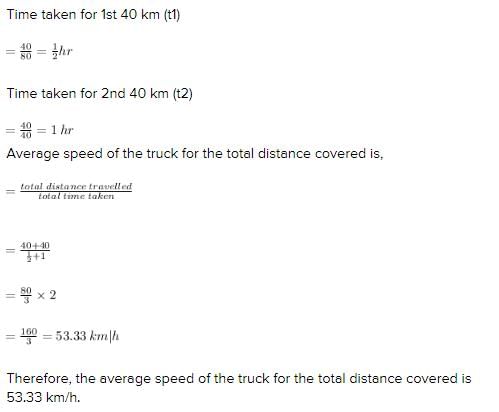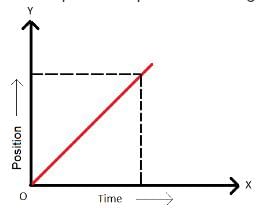Motion - Practice Test, Science, Class 9 - Class 9 MCQ
20 Questions MCQ Test - Motion - Practice Test, Science, Class 9
A train moving with a uniform speed of 54 kmph. What is its speed in m/s?
A truck covers 40 km with an average speed of 80km/h. Then it travels another 40 km with an average speed of 40 km/h. The average speed of the truck for the total distance covered is:
A car starts from city A and it travels 50 km in a straight line to city B. Immediately it turns around, and returns to city A. It took 2 hours for this round trip. The average speed of the car for this round trip is:
The equation v = u + at gives information as
Which of the following can determine the acceleration of a moving object?
A body is projected up with an initial velocity u m/s. It goes up to a height h metres in t seconds time. Then it comes back at the point of projection. Considering negligible air resistance, which of the following statement is true?
A car accelerates at 1.5 m/s2 in a straight road. How much is the increase in velocity in 4s?
Which of the following statements is correct?
What is the slope of the body when it moves with uniform velocity?
What does area of velocity time graph give?
What does the slope of velocity – time graph give?
Which of the following gives both direction and magnitude
If a moving body comes to rest, then its acceleration is
If a body starts from rest, what can be said about the acceleration of body?
What does slope of position time graph give?
When a body moves uniformly along the circle, then
Which of the following statements is correct?
















